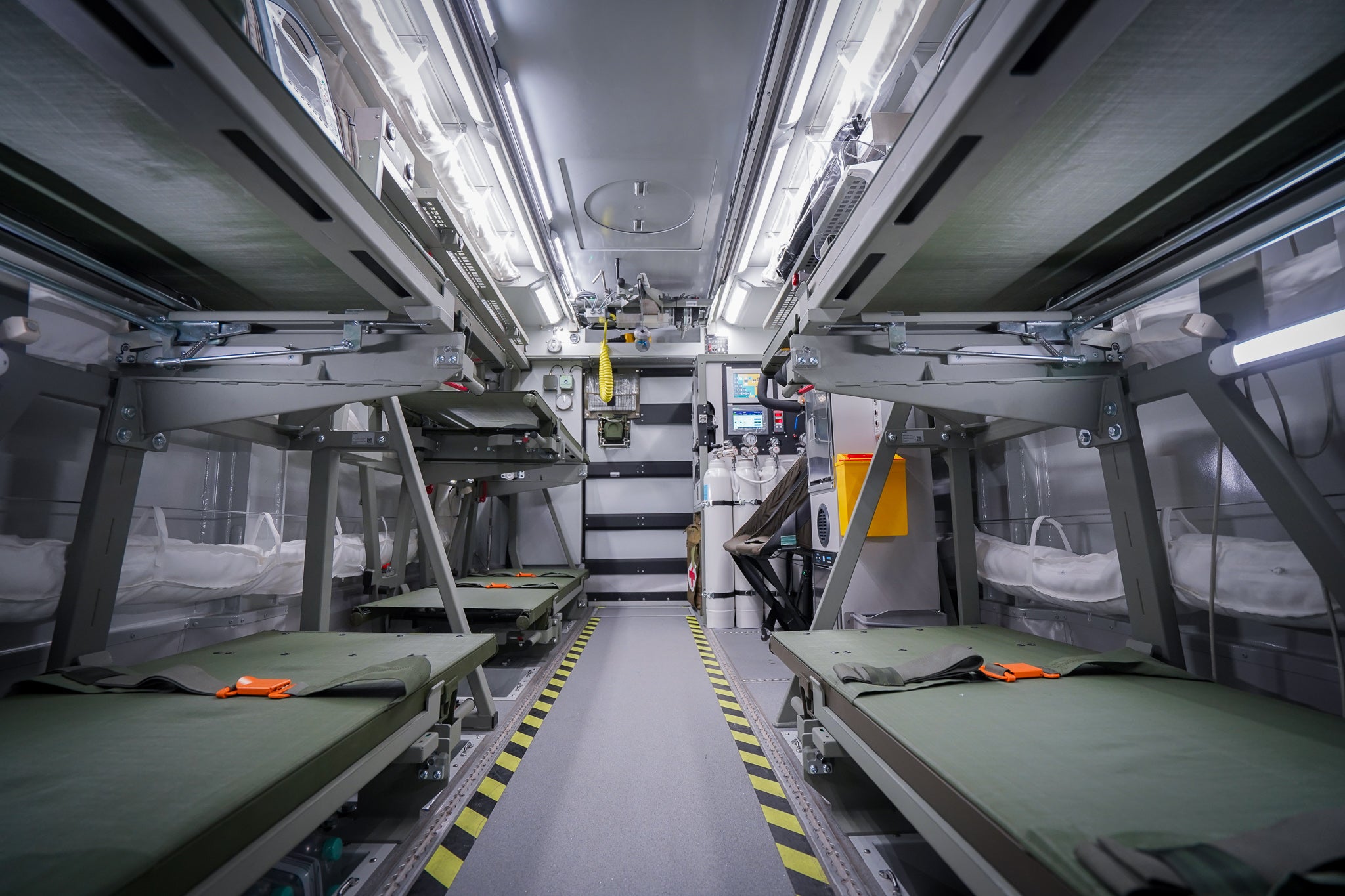
The German Armed Forces received the first of 13 protected-wounded transport containers (GVTC) from Airbus Defence and Space, the company announced 2 May.
The container will serve as a safe mode of transportation for the sick, injured, and wounded to hospitals or field hospitals, and allows medical care to be delivered while in-transport.
The Bundeswehr is set to train its medical personnel and rigorously test the container, paving the way for the GVTC to enter mass production. On 20 April the first GVTC was delivered and is set to serve as a “proof-of-concept” vehicle. The Bundeswehr is set to receive the 12-series GVTCs between 2024 and 2026.
In the GVTC, a team of two paramedics is capable of treating up to eight patients simultaneously. They are equipped to monitor vital signs and oxygen saturation, perform defibrillator operations, and provide ventilation through the integrated oxygen-generation system.
The protective design of the container shields its passengers equipment chemical warfare agents, shelling, and intense explosions. With the aid of a power generation unit, the GVTC is capable of operating independently for extended periods of time.
The GVTC’s high-performance air-conditioning system enables it to be utilised in even the most extreme climatic conditions.
Airbus Defence and Space, in collaboration with partner companies Drehtainer GmbH and Binz Automotive, developed the 20ft GVTC to match the external specifications international ISO standard 20ft container used in shipping and haulage.
With a length of approximately 6 metres, the GVTC can be directly integrated onto current Bundeswehr trucks through its hook roll-off system, without the need for specialist equipment such as a crane.
According to Harald Mannheim, the managing director of Airbus Defence and Space GmbH, the Bundeswehr’s rescue chain and capability to recover, transport, and treat the wounded in crisis areas is enhanced by their protected-wounded transport containers. “In this respect, the GVTC is further proof of how we and our state-of-the-art technologies help all those who help others.”







